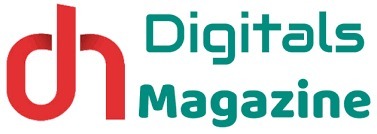People, organizations, and enterprises prefer to do all of their transactions through websites or mobile apps. We once again realize the need for authentication when we think about the potentially harmful individuals attempting to exploit the flaws in programs and internet platforms. To avoid risks like fraud and identity theft, authentication techniques must be used. It is necessary to enter and upload personal data into the system during the authentication process. These documents and information are kept electronically.
You will be required to verify papers in the following phase to demonstrate your identity. When documents are uploaded to the system a second time and they don’t match the first batch, the operation fails.
Document Identity Fraud Types:
Banks and other financial institutions must deal with a variety of document fraud schemes. Fraudsters utilise stolen and fake documents, as well as both, to commit document fraud. That’s why companies are taking serious measures in document checks. Customers need fast confirmation, yet it’s difficult to authenticate documents. Because there are so many different kinds of document fraud. All forms of document fraud are listed below:
Modified Documents:
Original papers that have been edited are known as modified documents, and they typically fall into one of two categories:
Forged Documents:
To commit ID fraud, thieves alter critical information on documents. They frequently end up altering variable information, including real pages from other documents, eliminating particular pages, putting phoney stamps and adding watermarks.
Blank Stolen Documents:
Since all documents begin with blank pages, thieves who gain access to them can use them to defraud financial institutions.
Illegal Papers:
Original documents are once again faked when they are obtained illegally. There are various forms of illegal documents:
Counterfeit Documents:
Documents that are counterfeit are copies of the genuine article, as the term implies. An official blank document will typically end up in the hands of a fraudster who will then add information to it.
Document Camouflage:
Some items shouldn’t be included in a document. It’s common for information that shouldn’t be there to be included in a fantasy or camouflage paper. The fraud that is simplest to spot is this kind.
Document Verification Advantages:
Validating documents offers various advantages. In order to prevent bogus users from accessing your accounts, authentication procedures are used. The relevant institution will require you to upload the documents and add your personal information into the system throughout this process. You can view these documents from anywhere in the globe at any time because they are kept on an electronic platform.
The document is accepted without going somewhere in person. With the completed document verification, you can immediately log in to the application or your account without noticing the time or location difference. You can complete your self-service transactions inside the application without requiring a second person thanks to document verification. You may open a bank account online and even make money transfers after having your paperwork verified. The most crucial step is demonstrating your identity as the transaction’s maker.
Customers are required to provide a number of ID documents during the onboarding process, including passports, driver’s licences, and government-issued ID cards. Manually verifying documents is difficult. Because of this, online document verification enables customers to upload documents and a selfie.
Online document verification software checks submitted papers to see if they are authentic before submitting them. To determine if a document is valid or not, DIRO online document verification software retrieves document data from the source that issued it.
Fighting Against Identity Fraud:
Institutions, corporations, and internet platforms are frequently faced with fraud, identity theft, and breach crimes. For instance, you might not be the one transferring money or opening a bank account. Someone else can readily act on your behalf if they have access to your identifying information. It is known as direct fraud in this instance.
Document verification is crucial to avoid such risks. You will be asked to provide proof of your identity before you can access your account. The data from the past are compared to this document. The transaction will be unsuccessful if the information and the papers do not match.
Wrapping it up:
Businesses have long been undergoing a digital revolution, but the recent worldwide epidemic has really accelerated this process. Businesses frequently follow regulations that result in complicated processes that frequently turn clients away in an effort to prevent the hazards of identity theft and financial crime.
As we’ve already established, offline document verification can be difficult, ineffective, and unsustainable. Additionally, they are costly and time-consuming. Banks rely on online document verification software to address the problems they have with offline document verification.
















Leave a Reply